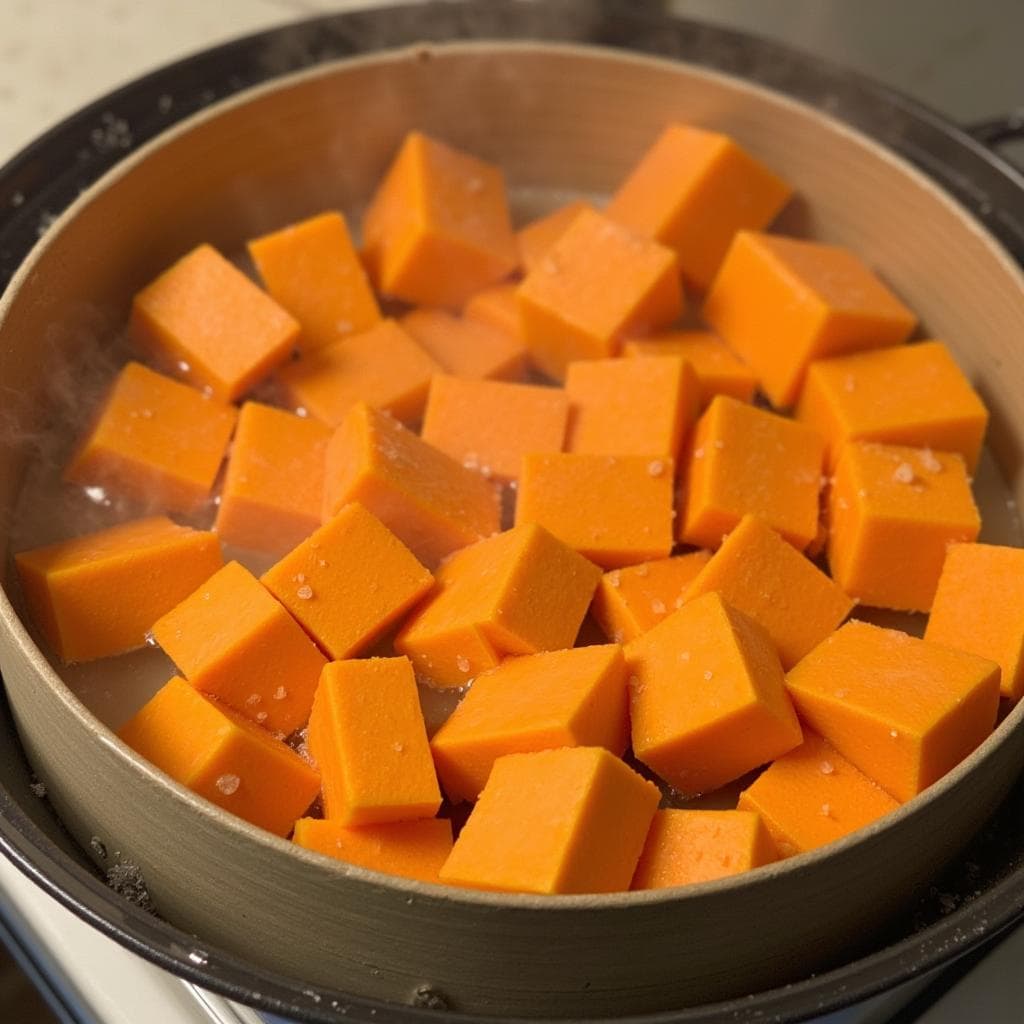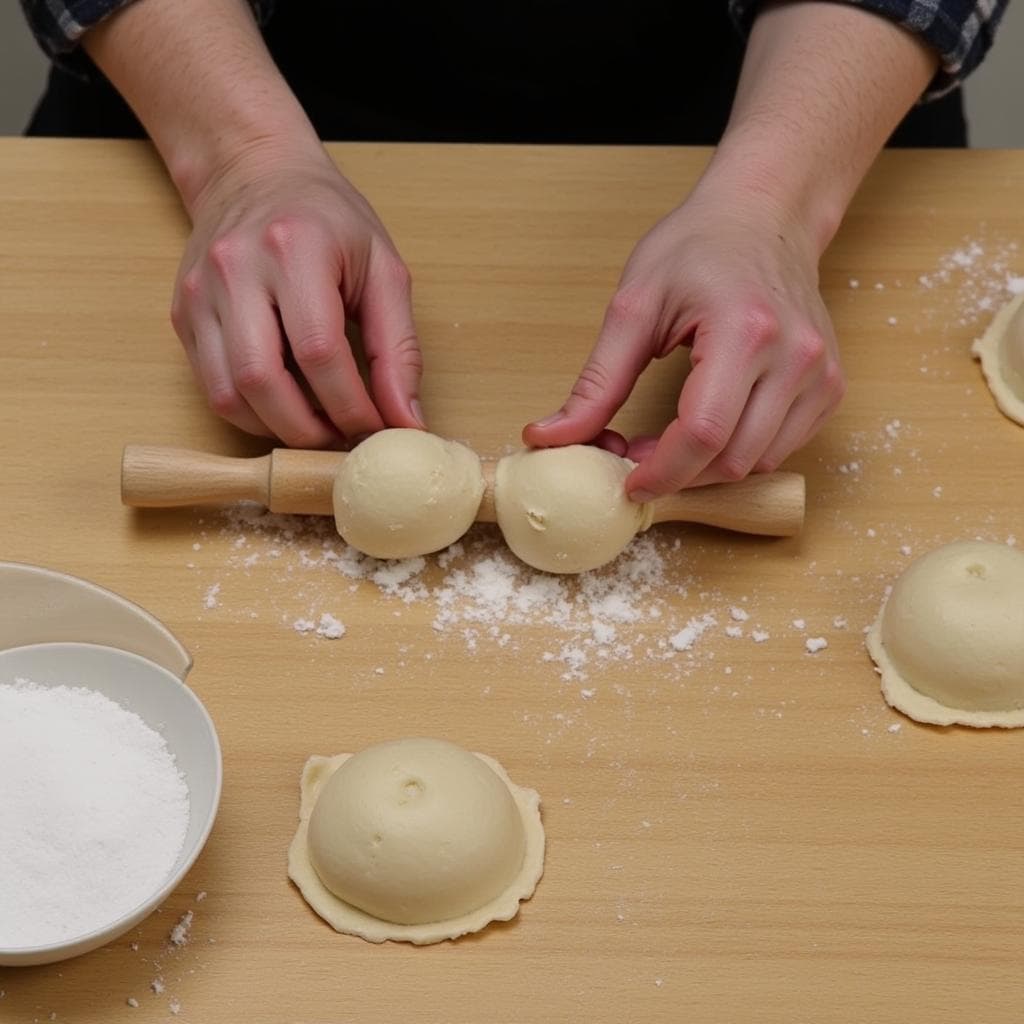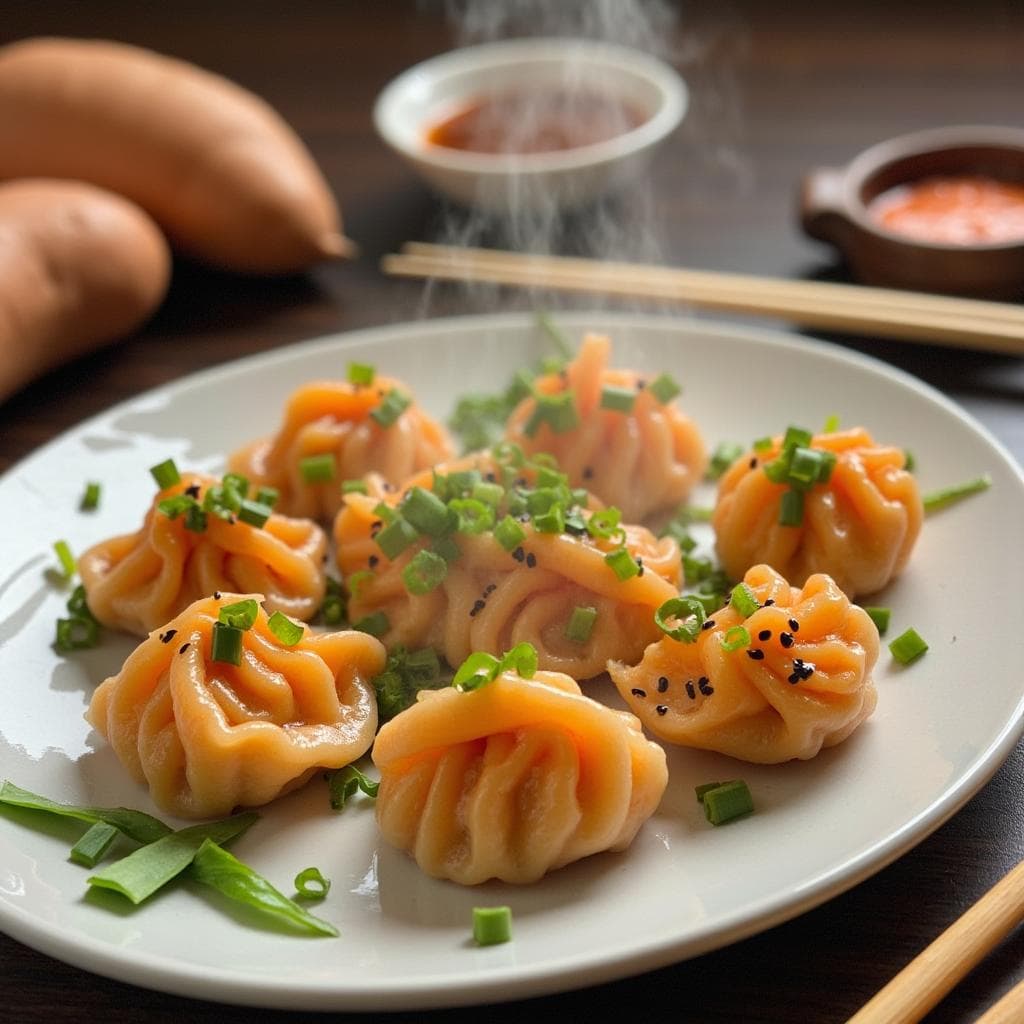When people think of dumplings, they often picture savory fillings wrapped in wheat-based dough. However, sweet potato dumplings offer a different experience. They bring a natural sweetness, gentle color, and a tender bite that appeals to a range of tastes. This dish can appear in traditional meals or modern fusion creations. In addition, it fits many eating plans, offering a comforting option that feels both hearty and light at the same time.
Why Sweet Potato Dumplings Are Unique
Sweet potato dumplings stand out because they rely on the gentle sweetness and soft texture of sweet potatoes. Most dumplings depend on wheat flour wrappers or glutinous rice flour. However, sweet potatoes bring a starchy base that can form a dough with minimal fuss. This dough can wrap sweet or savory fillings or form simpler shapes with a chewy bite. In addition, they often pair well with lightly sweetened sauces or broths, making them flexible.
These dumplings suit those who appreciate natural flavors. They do not demand complicated steps. Their main flavor comes from the root itself. By mixing mashed sweet potato with a bit of starch, cooks can craft small dough portions that hold shape well. In addition, these dumplings often have a beautiful orange hue, catching the eye on any plate.
Ingredients Needed for Sweet Potato Dumplings
To make sweet potato dumplings, you need only a few basic ingredients. First, select fresh sweet potatoes with smooth skin and bright color. Look for sweet potatoes that feel firm and heavy for their size. These will result in a better dough that holds together nicely. You will also need some starch, typically tapioca or potato starch, to give the dumpling dough the right springy texture. A pinch of salt can deepen the flavors. Beyond these basics, you can add a bit of sugar if you prefer a sweeter dumpling. On the other hand, if you plan to fill them with savory ingredients, keep sugar out.
Key ingredients:
- Sweet potatoes (choose fresh, firm ones)
- Tapioca starch or potato starch
- A small pinch of salt
- Optional sweetener, like sugar or honey
- Optional fillings (sweet red bean paste, mashed black sesame, or savory minced vegetables)
Choosing the Right Sweet Potatoes for Dumplings
When making sweet potato dumplings, the type of sweet potato you use matters. Different varieties have different levels of sweetness and moisture. Some varieties, like Japanese sweet potatoes, have a richer, sweeter taste and a dense texture. Others might be moister, lending themselves to a softer dough. Experimentation helps find your preferred result.
Tips for selecting sweet potatoes:
- Pick medium-sized ones for even cooking.
- Look for smooth skin without wrinkles or cracks.
- Check for spots or mold and avoid those.
- Press gently to confirm they feel firm, not soft.
If you find that your chosen sweet potatoes have too much moisture, add more starch to the dough. On the other hand, if the dough feels too dry, add a bit of warm water or a small amount of mashed sweet potato to correct the texture. The goal is a dough that feels pliable but not sticky.
Preparing Sweet Potatoes for Dumplings

Before you form dumplings, prepare the root. Start by washing and peeling the sweet potatoes. Then, cut them into chunks of even size. This helps them cook at the same pace. You can boil or steam these chunks until fork-tender. Steaming helps retain flavor and nutrition better than boiling, but boiling is easier for many kitchens.
Steps to prepare sweet potatoes:
- Wash and peel the sweet potatoes thoroughly.
- Cut into equal pieces, about 1-inch cubes.
- Place in a steamer basket and steam for about 15-20 minutes, or until tender.
- If boiling, place chunks in a pot of water and boil until they can be pierced easily.
- Drain and allow the sweet potatoes to cool slightly before mashing.
Once cooked, mash the sweet potatoes until smooth. Try not to leave lumps, as lumps can affect the dough’s consistency. A potato masher or a fork works well. If you want an extra-smooth texture, press them through a fine mesh sieve. This step helps form a dumpling dough that is uniform and easy to shape.
Mixing the Dough
After mashing the sweet potatoes, the next step is to form the dumpling dough. This dough typically involves blending mashed sweet potato with starch and a pinch of salt. The starch helps the dough hold its shape and gives it that signature chewy bite. Tapioca starch or potato starch works best because they produce a springy texture. Cornstarch can work too, but it might create a slightly different mouthfeel.
How to form the dough:
- Place mashed sweet potato in a mixing bowl.
- Sprinkle in a small pinch of salt.
- Gradually add starch, mixing gently with your hands.
- Continue adding starch until the dough no longer sticks to your fingers.
- Knead briefly until smooth and pliable.
Taste a small piece to gauge sweetness. If you want sweeter dumplings, add a teaspoon of sugar or honey at this stage. If you intend to fill your dumplings, keep the dough lightly seasoned. This neutral base lets fillings shine.
Shaping the Dumplings
Shaping dumplings can be simple or intricate. If you plan to serve them plain, roll the dough into small balls about the size of a marble or larger. For filled dumplings, roll the dough into a log and slice it into small rounds. Flatten each round into a wrapper and place a bit of filling in the center. Then, fold and pinch the edges to seal.
Shaping tips:
- Dust your working surface with a bit of starch if the dough sticks.
- Keep your hands lightly dusted as well.
- Aim for uniform sizes so they cook evenly.
- Press edges firmly to seal in fillings.
For beginners, start with simple shapes. Over time, you can form more decorative designs. Practice makes perfect. Small adjustments to dough thickness and shape can fine-tune the dumpling’s texture and appearance.

Cooking Methods: Boiling, Steaming, or Pan-Frying
You can cook dumplings in several ways. Boiling is the most common and straightforward. Simply drop them into gently boiling water until they float. Steaming them is another good approach, which helps them maintain shape and subtle flavor. If you crave a bit of crispness, pan-fry them in a light layer of oil after boiling or steaming.
Boiling:
- Bring a pot of water to a gentle boil.
- Drop dumplings in slowly, avoiding overcrowding.
- Wait for them to float, then cook for an additional minute or two.
- Scoop them out with a slotted spoon and drain well.
Steaming:
- Place dumplings on parchment paper in a steamer basket.
- Steam over medium heat for about 10-15 minutes, depending on size.
- Remove and let them cool slightly before serving.
Pan-Frying:
- Boil or steam first.
- Heat a nonstick pan with a small amount of oil.
- Sauté dumplings until they form a light, crisp crust.
- Serve hot, optionally with a dipping sauce.
Each method brings out different qualities. Boiled dumplings are soft and chewy, while steamed ones have a purer flavor profile. Pan-fried dumplings add a textural contrast that some people enjoy.
Serving Suggestions
Presentation affects how we enjoy food. Dumplings can be served warm, drizzled with a gentle syrup for a dessert course. Alternatively, present them with a savory broth or a light soy-based dipping sauce. Garnish with fresh herbs, chopped nuts, or toasted sesame seeds for added crunch and aroma.
Possible serving suggestions:
- Serve plain dumplings in a warm ginger syrup for a comforting dessert.
- Pair savory-filled dumplings with a light vegetable broth for a simple meal.
- Offer a small bowl of soy sauce mixed with a touch of rice vinegar and chili oil.
- Sprinkle black sesame seeds or chopped scallions on top.
These dumplings can also accompany other dishes. Combining flavors from similar cuisines can bring a sense of harmony to the meal.
Storing and Reheating
If you have leftovers, store dumplings in an airtight container in the refrigerator. They can remain fresh for a couple of days. When reheating, steam them briefly or drop them into hot water for a minute or two. If you pan-fried them before, reheat in a pan over low heat.
Storage tips:
- Keep in an airtight container to prevent drying out.
- Separate layers with parchment paper to avoid sticking.
- For longer storage, freeze uncooked dumplings on a tray until solid, then store in freezer bags.
- When cooking frozen dumplings, add a bit more time to the boiling or steaming process.
This flexibility means you can prepare a batch in advance and cook them when desired. Fresh dumplings taste best, but frozen ones work fine for busy weekdays or sudden cravings.
FAQs About Dumplings
What is sweet potato in Chinese Taiwan?
In Taiwan, sweet potatoes are a common ingredient and often called “地瓜” (dìguā). They appear in many street foods, snacks, and traditional sweets. Sweet potato dumplings might be served in dessert stalls, often with simple syrups or in sweet soups. This root plays an important role in Taiwanese culinary culture, blending local produce with traditional cooking methods.
What is sweet dumpling made of?
A sweet dumpling can be made from many bases, including rice flour or root vegetables. Sweet potato dumplings are formed by mixing mashed sweet potato with starch. They often contain sweet fillings like red bean paste. Alternatively, they can be served plain in a lightly sweetened broth. The natural sweetness of sweet potatoes provides flavor, reducing the need for heavy sweeteners.
What dishes can be made from sweet potatoes?
Sweet potatoes lend themselves to countless recipes. You can make fries, mashed sweet potatoes, pies, pancakes, soups, and even gnocchi-like dumplings. Sweet potato dumplings are one of many possibilities. They can be savory or sweet, fitting into various meals and cultural contexts. Their mild flavor and vibrant color make them popular ingredients worldwide.
Why don’t sweet potatoes get crispy?
Sweet potatoes contain more moisture and sugar than regular potatoes, which makes them harder to crisp. To achieve crispness, slice them thinly, pat them dry, and apply a bit of oil. Roasting them at a higher temperature also helps. However, when used in dumplings, crispness is not the main goal. Instead, dumplings focus on a soft, chewy, and comforting texture that sweet potato dumplings are known for.

